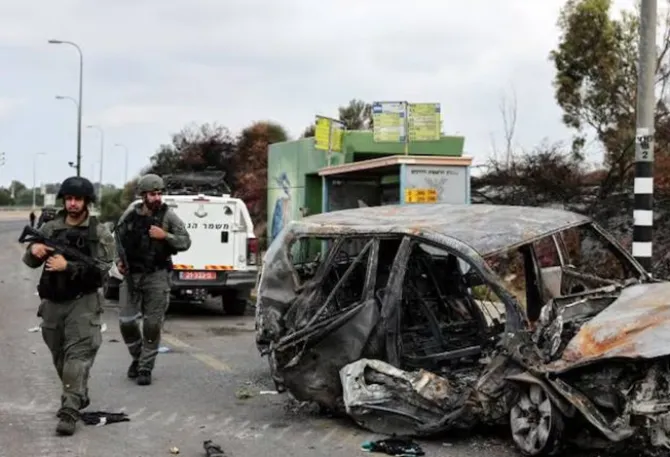The Middle East, where the Hamas-Israel conflict is centred, holds a significant portion of the world's proven oil reserves. It plays a crucial role in global energy markets as a major exporter of oil and natural gas. It accounts for 31 percent of global oil production, 18 percent of gas production, 48 percent of proved oil reserves, and 40 percent of proved gas reserves.
The region's instability has the potential to disrupt energy supplies, leading to fluctuations in worldwide energy prices. This emphasises the critical role this region plays in upholding stability within the global energy market. Driven by speculations regarding the potential impact of the conflict on energy production in the Middle East, global oil prices showed an upward trend with Brent Crude rising 4.2 percent to $88.15 and West Texas Intermediate (WTI) up 4.3 percent to $86.38 per barrel on Monday.
World Watching OPEC
Significantly, the world is watching out in rapt attention for the responses of the Organization of Petroleum Exporting Countries (OPEC), a pivotal force in the global oil market. Yet, OPEC's actions in the midst of the Israel-Hamas conflict hinge on a number of factors, that would include examining the gravity and duration of the conflict, its ramifications on oil production and logistics, and the global demand for oil in this period.
The world is watching out in rapt attention for the responses of the Organization of Petroleum Exporting Countries (OPEC), a pivotal force in the global oil market.
In the event of a potential ground invasion by Israel into the Gaza Strip and an extended conflict, the impact on energy prices and the resultant OPEC response would depend on the scale and reach that the conflict takes. For instance, if the conflict remains localised without affecting major oil producers or transit routes, prices may see limited immediate change, prompting OPEC to maintain current production levels.
However, if regional instability arises without direct impact on major oil sources or routes, there may be speculative shifts in the oil market, leading OPEC to consider production increases for price stability.
Oil supply could face a significant risk if the conflict spreads to other countries or affects important passages like the Strait of Hormuz. This would require OPEC to increase production or work with non-OPEC oil producers to maintain market stability. If the conflict escalates to involve Hezbollah or Iran, OPEC interventions will become more critical as this could also be accompanied by stricter US sanctions on Iranian oil exports.
The Russia Factor
However, it's uncertain whether a sustained increase in oil prices would prompt Saudi Arabia to alter its plans to unwind its production cuts. During the "Russian energy week" conference on October 11, Saudi Arabia and Russia discussed the oil market situation and prices amidst the Israel-Hamas conflict, with no clear-cut statements on oil production.
Oil supply could face a significant risk if the conflict spreads to other countries or affects important passages like the Strait of Hormuz.
OPEC's response to Israel-Hamas differs from how it had responded to the Russia-Ukraine war. While OPEC purportedly aims for non-political oil strategies alongside collaborating with Russia, the Israel-Hamas conflict isn’t seeing involvement of major oil nations or key routes unlike the Russia-Ukraine war.
Israel's two refineries producing 300,000 barrels per day and Palestine's absence of oil production contrasts with OPEC's swift adjustment for the Russia-Ukraine war due to Russia's crucial role in oil, which saw OPEC carry out a gradual oil production hike of 400,000 barrels per day for the month of April.
India’s Interests
With over 60 percent of India’s oil needs reliant on the Middle East, we have long recognised the associated energy security risks. To mitigate these, India has strategically shifted focus towards diversifying its oil imports, seeking alternatives from regions like Africa, Latin America, and North America.
Notably, amidst the Russia-Ukraine conflict, India seized the opportunity of substantial oil import discounts from Russia. Even as global crude oil prices surge, India remains steadfast in its continued importation from Russia, which were up by 80 percent in the month of September.
Amidst the Russia-Ukraine conflict, India seized the opportunity of substantial oil import discounts from Russia.
As for the potential impact of the Israel-Hamas conflict on India’s crude oil import plans, it largely depends on whether the conflict escalates to involve OPEC nations, especially Saudi Arabia. If this happens, it could lead to a severe crisis, with higher oil prices, a depreciating rupee, and inflation. India has to navigate these global market trends carefully. However, if the conflict remains localised between Israel and Hamas, the impact on India may be limited. But even if tensions keep rising, the possibility of Russia supplying affordable oil to major Asian importers, including India, is still open. Yet, India should diversify its oil sources to reduce risks. This decision will hinge on factors like global oil prices, geopolitics, and India's economy.
The views expressed above belong to the author(s). ORF research and analyses now available on Telegram! Click here to access our curated content — blogs, longforms and interviews.




 PREV
PREV


